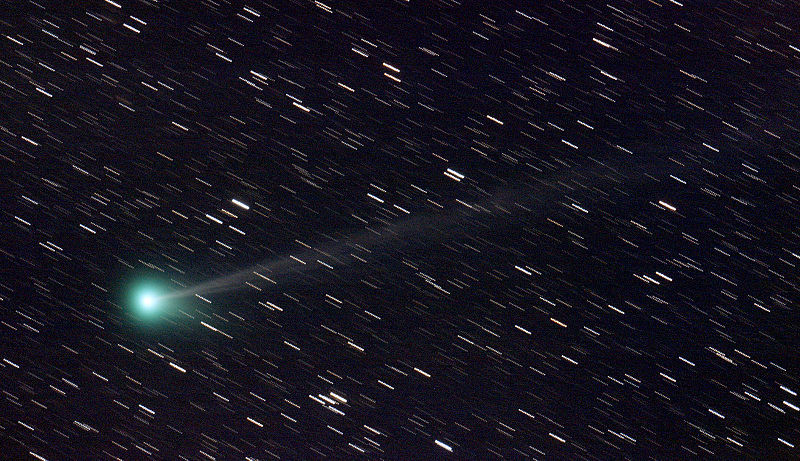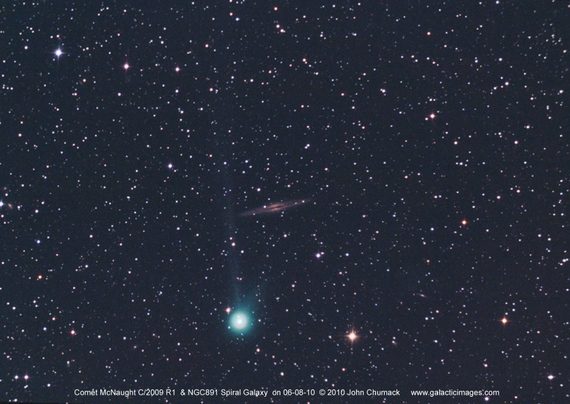Those who are willing to wake up early and go to a dark area will be able to see the new comet, which may brighten by the end of the month
by Nancy Atkinson; Translated by Avi Blizovsky

A new comet with a familiar name - McNutt, has begun to decorate the morning sky in the Northern Hemisphere, and it may provide viewers with an opportunity to see a comet with a significant tail. First images of comet McNaught C/2009 R1 showed that the tail is straight across the sky. This image, taken by amateur astronomer John Sumack of Ohio, shows the comet passing by the galaxy NGC 891 shortly before sunrise on June 8.
"I used a 5.5 inch telescope and a Canon Rebel Xsi digital camera to take the picture with a 15 minute exposure." Chumak said. "He also looks good in binoculars"
This is the last comet so far discovered by Australian astronomer Robert McNaught, who saw it on September 9, 2009. One of the brightest comets of the last decade also bore McNaught's name alongside its serial name C/2006 P1.
The new Comet McNutt is low in the sky for early morning Northern Hemisphere observers. As a class he crosses the Perseus group. From the 11th to the 13th of June it will be possible to see it well because we are in the period of the birth of the moon.

MacNutt will be visible in mid-June to observers in dark places. It is expected to brighten in the coming weeks, when it will reach a distance of 1.13 astronomical units (about 170 million kilometers) from Earth on June 15 and 16. Currently it is at the limit of visibility (magnitude 6) and could become as bright as the Big Dipper before the end of the month.
Since this is the comet's first visit to the inner solar system, it is not clear what brightness it may reach, but it is worth taking advantage of the opportunity and going out to observe.
The atmosphere of the comet, or the oil gas from the nucleus of the comet is huge - it is bigger than the planet Jupiter, this is what gives the comet the potential to be visible to the naked eye.

3 תגובות
Ha.
You better look up.
Which way should I look if I want to watch it?
Thanks.